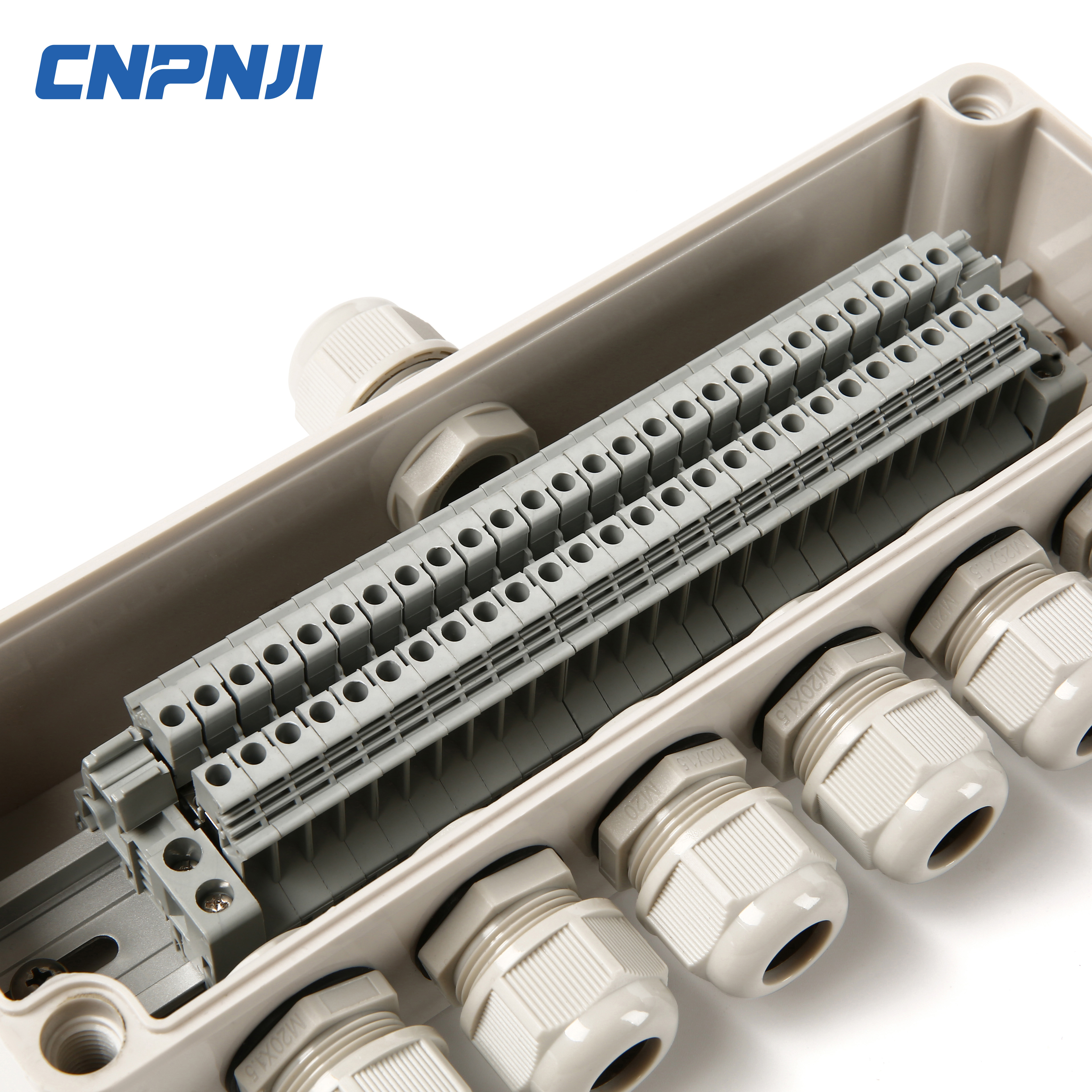Construction and working principle of terminal box
Terminal box is a common electrical connection device, which is widely used in electrical control systems, distribution systems, and various electronic devices. Its main function is to facilitate the connection and disconnection of wires, while providing a transmission path for electrical signals or energy.
Construction:
Shell:
Materials: Usually made of insulating materials such as plastic (such as PVC, PA), metal (usually aluminum or galvanized steel), or composite materials, used to protect internal terminals and wires from external environmental influences.
.Size: There are multiple standard sizes and shapes, such as rectangular, square, etc., and the specific size depends on the application and current capacity requirements.
Terminals/Connectors:
Materials: Generally, conductive metal materials such as copper, brass, silver, or tin plated copper are used to ensure good electrical connection performance.
.Type: Terminals can be screw type, spring type, plug-in type, or ring type, each type is suitable for different wiring methods and application scenarios.
Posts or Screws:
Used to secure the wires entering the box and ensure good contact with the terminals.
Insulation components:
To prevent short circuits and leakage, some terminal boxes may have insulated partitions or bases inside.
Identification system:
For the convenience of identification and management, terminal boxes usually have a labeling or labeling system to indicate the purpose or connection object of each terminal.
Working principle:
The working principle of the terminal box is relatively simple. When a wire is connected to a terminal, a conductive path is formed through the metal part of the terminal, and current can flow from one wire to another wire through the terminal. The design of terminals allows for quick connection and disconnection of wires without the need to solder or twist wires every time, greatly improving the efficiency of circuit construction and maintenance.
Connection method:
Screw connection: Use screws and nuts to fix the wires to the terminals, suitable for thicker wires.
Spring connection: Using the clamping force of the spring to connect wires, suitable for quick operation and small wires.
Plug and unplug connection: Similar to a telephone line plug, it can be quickly inserted and removed, making it easy to frequently change lines.
Cold press connection: The metal is deformed and fixed to the wire through mechanical pressure, and the connection can be completed without the need for tools.
Function in the circuit:
Transfer station: As a connection point between different wires, it realizes the distribution and transmission of current and signals.
Easy maintenance: It can quickly disconnect and reconnect wires, making it easy to detect and repair circuits.
Organizational management: Centralize the management of wire connections, reduce confusion, and improve the cleanliness and reliability of circuits.
Security protection: Some terminal boxes have functions such as dust-proof, waterproof, and corrosion-resistant, protecting internal connections from external environmental influences.
In summary, the design and selection of terminal boxes depend on specific application requirements, including the required current capacity, environmental conditions, installation space, and convenience of operation. The correct selection and use of terminal boxes are crucial for ensuring the safety and efficiency of the entire electrical system.
